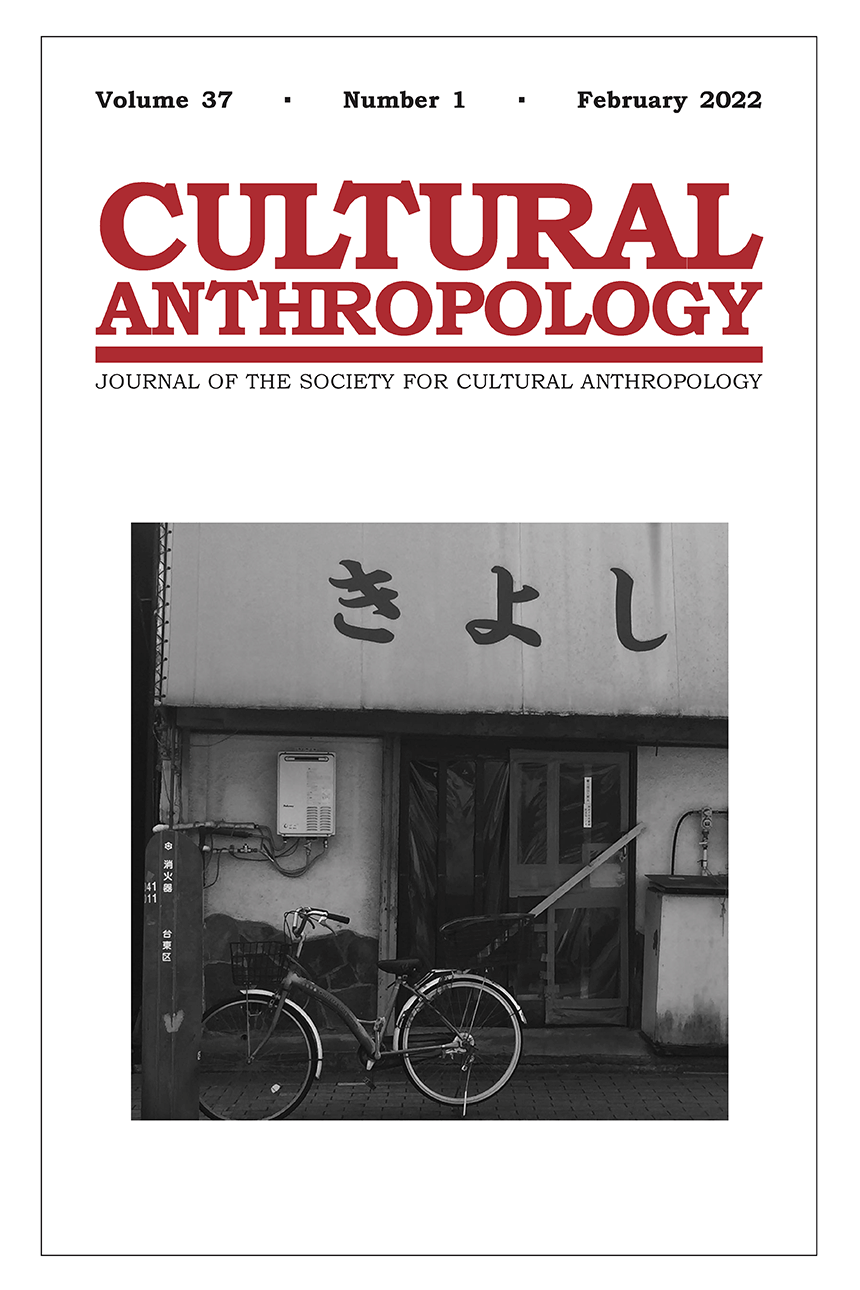
Our first issue of 2022 opens with a Colloquy exploring the bioeconomies of mobility. Edited by Marthe Achtnich, its essays compare notes on how the controlled movement of life forms—humans and human oocytes, rare animals, viruses, and bacteria—can itself be a source of profit, and argue further that the valuation of life is often predicated on its disposability.
In an inventive and engaging article, Hadas Weiss revisits Los Olivos, the Andalusian village where, in the 1980s, Jane Collier tracked a shift in subjectivity—from emphasizing “duty to desire”—that accompanied economic transition from agrarianism to a national labor market. Weiss convincingly demonstrates that, with the arrival of finance capitalism alongside labor precarity in recent decades, villagers’ daily struggles to “hang on” are today redeemed by “an ideology of endurance” which reflects both the burden that inherited property has become and the false promise of capitalist self-invention. With “A Wild Boar Chase: Ecology of Harm and Half-Life Politics in Coastal Fukushima,” Ryo Morimoto considers the efforts of ordinary people to reconstruct their lives in the aftermath of earthquake, tsunami, and nuclear devastation. It is a timely and important intervention in multispecies ethnography, as well as the material and semiotic dimensions of work on catastrophe. In his sharp-eyed ethnographic study of clinical care in Thailand, Scott Stonington develops an analysis of "ontological collateral" to detail how recent clinical acceptance of the need to treat cancer pain has led, controversially, to calls to treat “chronic non-cancer pain” as well. Critics counter that “chronic pain” is a Western import that threatens to weaken Thai minds and bodies. Michele Ilana Friedner’s exploration of the implications of cochlear implantation in India adds a new and compelling dimension to discussions of disability. Her work and analyses demonstrates how notions of the “normal” in ability and personhood are critical to the habilitation of the so-called “hearing brain.” These interventions generate not only distinctive capacities for children with implants, they also define a “new normal” that simultaneously forecloses, and diminishes other ways of being. The issue closes with Klaus K. Y. Hammering’s "Gambling, Dignity, and the Narcotic of Time in Tokyo’s Day-Laborer District, San’ya." At the intersection of labor and gambling, Hammering explores the production of temporality and the struggles of workers to create themselves in a world where their material resources have been painfully diminished.
The photo on the cover of this issue is by Klaus K. Y. Hammering.
